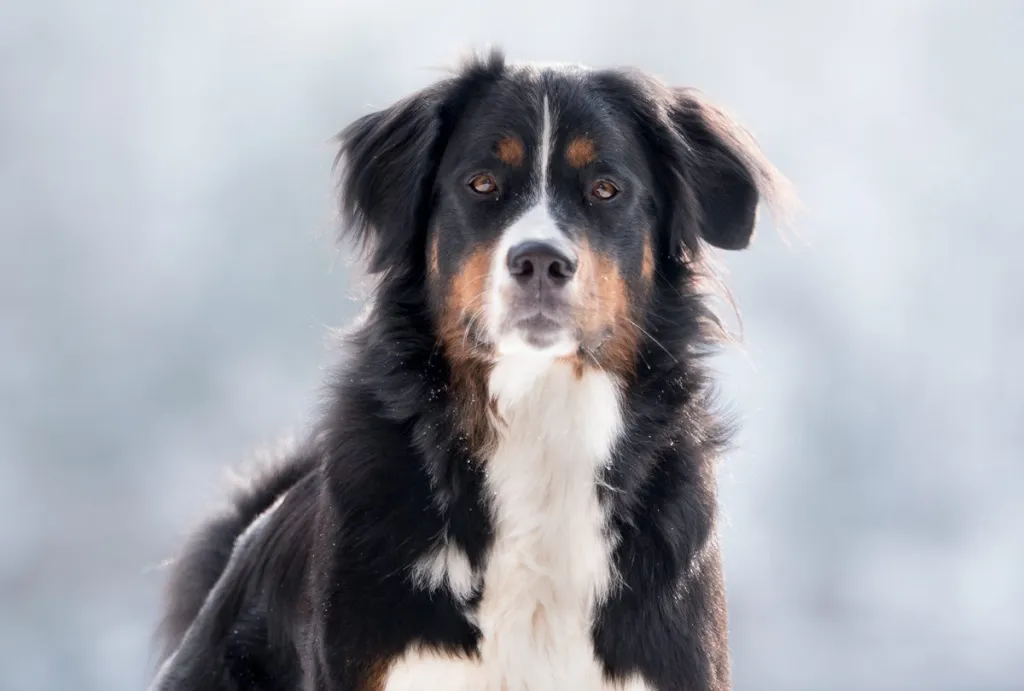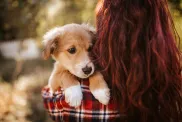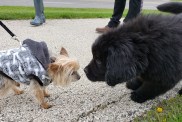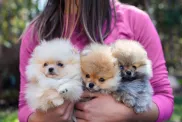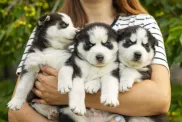The Golden Mountain Dog is a large to-giant-sized crossbreed between a Golden Retriever and a Bernese Mountain Dog. Gentle, friendly, and intelligent, these pups have inherited some of the best qualities from their parent breeds. Standing between 24 and 28 inches tall at the shoulder and weighing between 65 and 140 pounds, the Golden Mountain Dog can vary greatly in size due to the distinctive differences in their parent breeds. They also feature a dense, water-resistant coat in shades of gold and black.
In terms of temperament, Golden Retriever Bernese Mountain Dog mixes are known for their loyalty, affection, and friendly personalities. They thrive on companionship and form strong bonds with their human family members. Intelligent and eager to please, they are trainable and adaptable. With the Golden Retriever’s friendly demeanor and the Bernese Mountain Dog’s calm and steady nature, the Golden Mountain Dog brings a perfect blend of qualities, making this wonderful pup an ideal choice for those seeking a loving and versatile canine companion.
Golden Mountain Dog characteristics
- Height: 24 to 28 inches at the shoulder
- Weight: 65 to 140 pounds
- Lifespan: 9 to 14 years
Coat and color variations
The Golden Mountain Dog, a mix between a Golden Retriever and a Bernese Mountain Dog, has a stunning double coat that combines the best features of both breeds. Their coat is typically dense, soft, and medium to long and provides excellent insulation. Color variations range from black, brown, and white markings akin to the Bernese Mountain Dog, to golden or cream tones inherited from the Golden Retriever. Some may exhibit a mix of tricolor patterns with golden highlights.
Physical traits and appearance
The Golden Mountain Dog is large and muscular, with adults typically weighing 65-140 pounds and standing 24-28 inches tall at the shoulder.
Head and facial features
- Head: Broad and well-proportioned, with a slightly domed skull and strong, straight muzzle.
- Eyes: Medium-sized, almond-shaped, typically in shades of brown; expressive and gentle, giving a friendly and intelligent appearance.
- Ears: Medium-length, floppy, and set high on the head, often lying close to the cheeks.
- Nose: Black and broad, with well-defined nostrils.
Other physical attributes:
- Build: Muscular, sturdy, and well-balanced, with a deep chest and strong back; designed for endurance and strength.
- Tail: Long, thick, and bushy; often carried low when relaxed but may rise slightly when alert or excited.
- Legs: Straight, powerful, and well-boned, with large, rounded paws suited for stability on various terrains.
- Gait: Smooth and graceful, with a strong, purposeful stride.
Golden Mountain Dog personality
Because the Golden Mountain Dog’s parent breeds are two of the friendliest and most affectionate, this mix is renowned for their goofy, loving, and loyal temperament. Their energy levels can range from moderately active to highly energetic, depending on which parent they take after. Golden Retrievers are known for their upbeat, playful nature, while Bernese Mountain Dogs are more laid-back and easygoing. Both breeds excel in their compatibility with children, making the Golden Mountain Dog an ideal family companion.
Temperament and behavior
- Affectionate and Loving: Known for their deep attachment to family members, often seeking attention and cuddles.
- Friendly and Social: Naturally outgoing, they get along well with people, other dogs, and even other pets.
- Loyal and Devoted: Extremely loyal to their family, making them excellent companions and protectors.
- Playful and Goofy: Enjoy playful antics and have a silly, fun-loving side, especially during playtime.
- Intelligent and Trainable: Quick learners who respond well to positive reinforcement, eager to please their owners.
- Gentle and Patient: Particularly good with children, displaying patience and a calm demeanor.
- Energetic to Laid-back: Energy levels can vary, with some being moderately active and others more energetic, depending on which parent they take after.
- Protective Instincts: While not typically aggressive, they may show a protective streak towards their family.
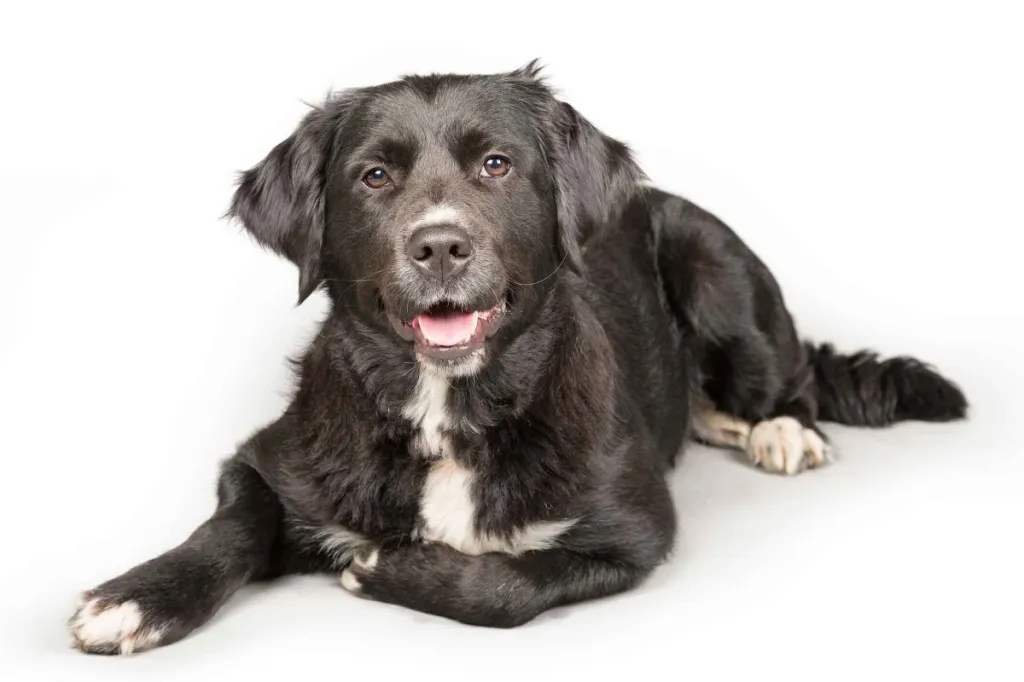
Training and socialization
Early socialization and positive reinforcement training are crucial due to their intelligence and potential stubbornness. Of course, their intelligence allows them to pick up commands quickly, so early training is key to establishing good behavior from the start. Use praise, treats, and affection to reward desired behavior. Golden Mountain Dogs respond well to positive reinforcement, and this approach will keep them motivated and engaged.
Training tips:
- Be Consistent: Consistency is crucial in training. Use the same commands and routines to avoid confusion. This helps your Golden Retriever Bernese Mountain Dog mix understand what is expected of them.
- Keep Training Sessions Short and Fun: Golden Mountain Dogs are intelligent but can lose interest if training sessions are too long or repetitive. Keep sessions short (10-15 minutes) and engage with varied activities.
- Mental Stimulation: Incorporate puzzle toys, obedience training, and interactive games into their routine to challenge their mind. A bored Golden Mountain Dog can become restless or destructive. Once basic obedience is established, teach more advanced commands or tricks. Their intelligence makes them excellent candidates for agility training, fetch, or scent games.
Golden Mountain Dog care
As with all dogs, it’s important to keep up your Golden Mountain Dog’s regular veterinary checkups to detect any health concerns early. Your vet can help you develop a care routine that will keep your dog healthy.
Golden Mountain Dog grooming
Golden Mountain Dogs have dense, double-layered coats that require regular grooming to keep them healthy and tangle-free. Their coats are prone to shedding, particularly during seasonal changes, so consistent brushing is essential to manage loose fur and prevent matting. Bathing should be done as needed, typically every 4-6 weeks, to keep their coat clean without stripping natural oils. Regular grooming not only maintains their appearance but also promotes healthy skin and a strong bond between dog and owner. Attention should also be given to their nails, teeth, and ears to ensure overall hygiene.
How to groom a Golden Mountain Dog
Brushing and bathing
- Brush at least 3-4 times a week, daily during heavy shedding seasons. Use a slicker brush or de-shedding tool to remove loose fur and prevent matting.
- Bathing should be done every 4-6 weeks, or when they get particularly dirty. Use a dog-specific shampoo to avoid drying out their skin.
Nails and ears
- Check and clean ears weekly using an ear-safe cleaner.
- Teeth brushing should be done 2 or 3 times a week using a dog-specific toothbrush and toothpaste to prevent plaque buildup and promote oral health. Never use human toothpaste!
Trimming and Tidying:
- Optional: Trim longer fur around the paws, ears, and tail if needed, especially to prevent debris accumulation.
- Visit a professional groomer every 6 weeks to tackle tough-to-reach spots, especially around the hindquarters. Sanitary grooming may be needed if your Golden Mountain Dog is especially fluffy in the back.
Check for skin issues
- Inspect Regularly: As you groom, check their skin for any signs of irritation, redness, or bumps. If you notice anything unusual, consult a vet.
Flea, tick, and parasite control
Keep up with flea and tick prevention treatments, especially if your Golden Mountain Dog spends much time outdoors. Regular grooming allows you to spot parasites early.
Early acclimation is key
Getting your Golden Mountain Dog accustomed to grooming procedures from a young age makes the process easier and more enjoyable for both of you. Handle their paws frequently, examine their mouth and ears, and reward them for good behavior during grooming sessions. This positive foundation sets the stage for stress-free veterinary exams and handling throughout their lives.
Golden Mountain Dog Feeding and Nutrition
An ideal Golden Mountain Dog diet should be formulated for a large breed with medium energy. Golden Mountain Dogs need to stick to a healthy diet, as overeating can cause weight gain and associated health problems, especially if adequate exercise isn’t offered.
As with all dogs, the Golden Mountain Dog’s dietary needs will change from puppyhood to adulthood and will continue to change into their senior years. You should ask your veterinarian for recommendations about your Golden Mountain Dog’s diet, as there is far too much variation among individual dogs–including weight, energy, and health–to make a specific recommendation.
- Puppy Portions: Puppies require a nutrient-dense diet to support their rapid growth and development. Feed a high-quality large-breed puppy food, following the feeding guidelines on the packaging based on your puppy’s weight.
- Adult Portions: Feed an adult Golden Mountain Dog based on its weight, size, and activity level. On average, a large adult (65-140 lbs) Golden Mountain Dog will need about 3-5 cups of dry food per day, split into two meals.
- Adjust According to Activity Level: Highly active Golden Mountain Dogs, especially those engaged in activities like hiking or agility training, may need more food than less active ones. Always monitor their weight and adjust portions accordingly.
Golden Mountain Dog family compatibility
Golden Mountain Dogs come from two of the most family-compatible breeds, the Golden Retriever and the Bernese Mountain Dog. Known for their loving temperaments, they form strong bonds with their families and just want to be included. Known for their patience and gentle demeanor, they are particularly good with children, often acting as both playful companions and protective guardians. Their social and friendly personality helps them integrate seamlessly into busy households and they get along well with other pets, especially if socialized from a young age. While they enjoy playtime and outdoor activities, they are equally content relaxing with their loved ones, making them adaptable to various family lifestyles. Regular interaction and involvement in family activities keep them happy and well-behaved.
Is the Golden Mountain Dog good with children?
Their gentle temperament, especially with children, makes the Golden Mountain Dog an excellent choice for families with kids. They are patient and playful, keeping up with the energy of children while also being careful and protective. Because of their sporting ancestry, they may get too excited and play too rough. Firm, but positive reinforcement training should be used to teach dogs when play becomes too much.
As with every breed, you should always teach children how to approach and touch dogs and supervise any interactions between dogs and young children to prevent biting or ear or tail pulling on the part of either party. Teach your child never to approach any dog while it’s eating or sleeping or to try to take the dog’s food away.
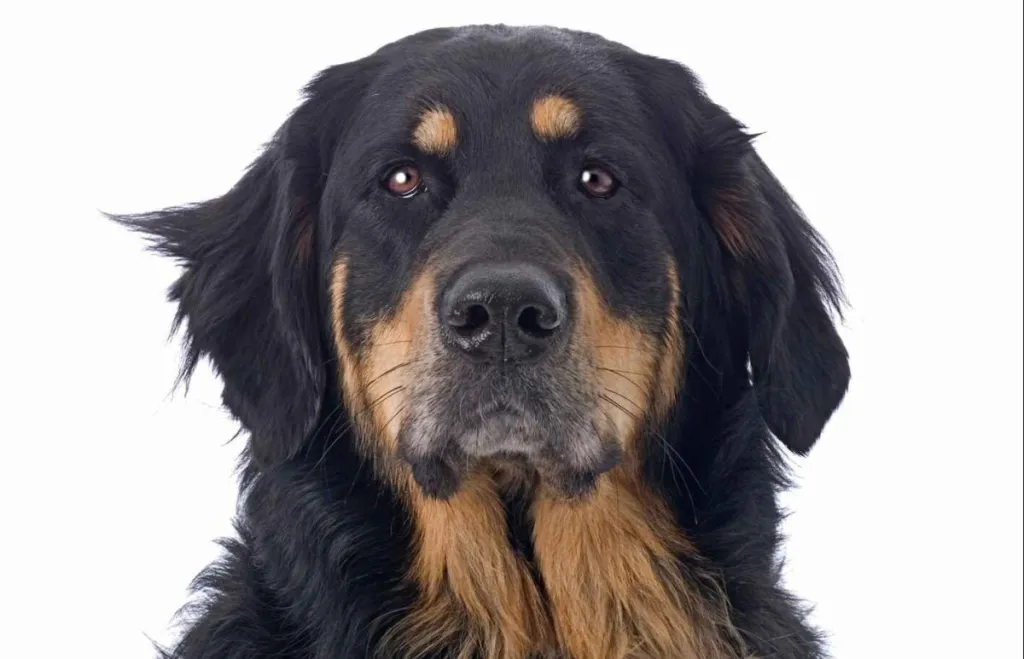
Health issues
Golden Mountain Dogs are generally considered to be healthy dogs; although, the mixed breed can be predisposed to some of the same conditions that the Golden Retriever and Bernese Mountain Dog face. As always, it’s important to schedule regular wellness visits with your dog’s vet. Some of the more common health problems Golden Mountain Dogs suffer from include:
- Von Willebrand’s Disease: Von Willebrand’s disease is a hereditary bleeding disorder that affects dogs, characterized by a deficiency or dysfunction of von Willebrand factor, a blood clotting protein. This condition can result in prolonged bleeding after injuries or surgeries, as well as spontaneous bleeding from the gums or nose. Diagnosis involves blood tests to measure clotting factors, and treatment may include medications to manage bleeding episodes.
- Hypothyroidism: Hypothyroidism is a common endocrine disorder in dogs, occurring when the thyroid gland doesn’t produce enough thyroid hormones. Symptoms include weight gain, lethargy, hair loss, and skin issues. Diagnosis is typically based on blood tests measuring thyroid hormone levels. Treatment involves lifelong thyroid hormone replacement therapy to restore hormone balance and manage symptoms.
- Heart Problems: Heart problems in dogs can encompass various conditions such as congestive heart failure, heart murmurs, or valvular diseases. Symptoms may include coughing, difficulty breathing, lethargy, and exercise intolerance. Diagnosis involves physical exams, imaging tests like X-rays or ultrasounds, and sometimes electrocardiograms. Treatment varies based on the specific heart condition but may include medications, dietary changes, or surgical interventions. Regular veterinary check-ups are crucial for early detection and management of heart problems in dogs.
Rescue groups and organizations
It may be hard to find a breed-specific rescue for Golden Mountain Dogs because they are a mixed breed. However, you may want to try Golden Retriever or Bernese Mountain Dog breed-specific rescues, as they often care for mixes, as well. Here are some rescues you can try:
- Bernese Mountain Dog Club of America
- Chattahoochee Valley Bernese Mountain Dog Rescue
- BFW Rescue
- BARC Inc
- Golden Retriever Rescue of Atlanta
- As Good as Gold Rescue
- Retriever Rescue of Las Vegas
Golden Mountain Dog puppies
If you’re looking for a Golden Mountain Dog puppy, always research reputable breeders. Unfortunately, many backyard breeders prioritize profit over the well-being of the dogs. This could result in getting a puppy with health issues, poor socialization, or genetic disorders. By purchasing from such breeders, you may also inadvertently support inhumane breeding practices, where breeding dogs are often kept in poor conditions and suffer greatly.
How much are Golden Mountain Dog puppies?
Golden Mountain Dog puppies from a reputable breeder can cost between $2000 and $3,500, depending on several factors. These include the breeder’s reputation, location, and the puppy’s specific traits like coat color, size, and overall health. Beware of any breeder offering puppies for cheaper prices.
